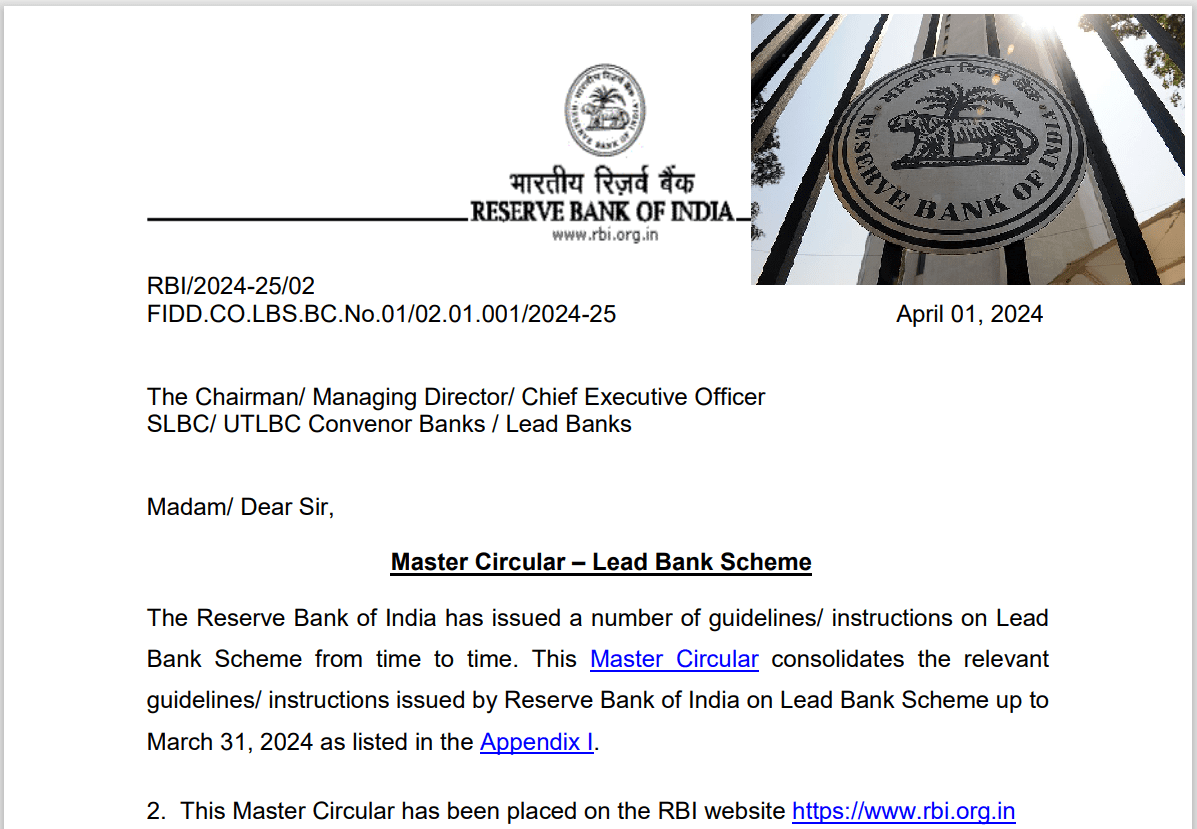Lead Bank Scheme (LBS):
The Lead Bank Scheme (LBS) was established in December 1969 by the Reserve Bank of India (RBI) to address the lack of banking services and credit facilities in rural areas. The scheme aimed to coordinate the activities of banks and other developmental agencies to promote financial inclusion and rural development. It assigned a specific bank in each district as the “Lead Bank” responsible for spearheading the development efforts in that area.
Historical Background:
The LBS was introduced based on the recommendations of the Gadgil Study Group and the Nariman Committee. The Gadgil Study Group, headed by Prof. D. R. Gadgil, emphasized the need for commercial banks to increase their presence in rural areas and develop a rural orientation. The Nariman Committee, chaired by Shri F. K. F. Nariman, endorsed the idea of an “Area Approach” and recommended that each bank concentrate on specific districts where it would act as the Lead Bank.
Objectives and Relevance of LBS:
The primary objective of the Lead Bank Scheme is to ensure the flow of bank finance to the priority sector and other sectors in rural areas. It aims to promote the overall development of the rural economy by coordinating the efforts of banks and other stakeholders. The scheme has been successful in expanding banking services, mobilizing deposits, and providing credit to the priority sector in rural and semi-urban areas.
Involvement of Private Sector Banks:
To enhance the effectiveness of the scheme, private sector banks were encouraged to actively participate in the Lead Bank Scheme. They were urged to leverage information technology and contribute to strategic planning, credit planning, and implementation. The involvement of private sector banks has brought new perspectives and resources to the scheme, strengthening its impact.
Fora under Lead Bank Scheme:
- Block Level Bankers’ Committee (BLBC):
The BLBC acts as a coordination forum at the block level, bringing together credit institutions and development agencies. It prepares and reviews the implementation of the Block Credit Plan, which outlines the credit requirements of the block. The Lead District Manager (LDM) chairs the BLBC, and all banks operating in the block participate in its activities. - District Consultative Committee (DCC):
The DCC operates at the district level and serves as a platform for coordination among banks, government departments, and other stakeholders. The DCC discusses and addresses issues related to credit flow, financial inclusion, and developmental activities in the district. The Lead District Manager plays a crucial role in coordinating the activities of the DCC. - District Level Review Committee (DLRC) Meetings:
DLRC meetings are held to review the performance of the Lead Bank in the district. These meetings assess the progress made in implementing various banking and development programs. The DLRC meetings provide an opportunity for stakeholders to discuss challenges, evaluate achievements, and plan future strategies. - State Level Bankers’ Committee (SLBC):
The SLBC plays a pivotal role in coordinating the activities of banks at the state level. It acts as a platform for collaboration between banks and the state government to address regional and state-level banking issues. The SLBC facilitates the implementation of various government schemes and policies related to financial inclusion and credit delivery.
Implementation and Monitoring:
The implementation of the Lead Bank Scheme involves several key aspects. Banks are required to prepare credit plans, which outline the credit requirements of different sectors in the district. These plans are periodically reviewed, and the performance of the credit plans is monitored closely. Lead banks are assigned responsibilities for specific sectors or programs based on their capabilities and expertise. The scheme also focuses on banking penetration, aiming to provide banking services to unbanked areas and villages. Measures are taken to enhance farmers’ income and promote digital payments to deepen the digital payments ecosystem.
Conclusion:
The Master Circular on the Lead Bank Scheme provides comprehensive guidelines for the effective implementation of the scheme. By coordinating the efforts of various stakeholders, the Lead Bank Scheme has played a crucial role in promoting financial inclusion, rural development, and credit flow to priority sectors. The involvement of private sector banks and the establishment of various fora have strengthened the scheme’s impact and relevance in the present context.
Read Master Circular from RBI on Lead bank Scheme for more details.
Also Read: Reserve Bank of India – Notifications (rbi.org.in)
Read More: Global Fintech Newsletter, March 2024, by NewNerve
